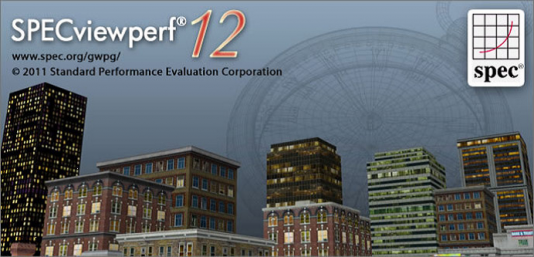This tanker doesn’t turn fast, but when it does you know it.
The last version of SPECviewperf 11, the popular benchmark from SPEC’s Graphics and Workstation Performance Group (SPEC/GWPG), was released in June 2010—a mere three years and a bit ago. You can’t rush into these, especially when you use volunteers who don’t respond well to beatings.

Expected this fall, SPECviewperf 12 is worth waiting for. It is the first all-new version of SPECviewperf in 18 years! SPECviewperf 12 will support OpenGL and DirectX on release and is capable of running dynamically generated datasets such as those used in medical, CAE, and oil and gas applications.
SPECviewperf is developed by SPEC/ GWPG’s project group for graphics (SPECgpc). Also under the SPEC/GWPG umbrella are project groups developing application (SPECapc) and workstation (SPECwpc) performance characterization benchmarks. More than 12,000 SPEC/GWPG benchmarks were downloaded in 2012.

New SPEC application benchmarks
The latest from the SPECapc project group—which measures total system performance for specific applications—is updated benchmark software for systems running Siemens NX 8.5. SPECapc for Siemens NX 8.5 runs on the Windows 7 64-bit operating system.
The updated benchmark includes four models ranging in size from approximately 87 MB to 347 MB. It tests performance for operations such as loading parts, Booleans, rotations, zooms, pans, front and back clipping, modifying perspective parameters, full-view generation, different edge modes, translucency, and hidden-surface removal. Composite results are recorded for graphics, CPU, and disk I/O operations.
Before the end of the year, the SPECapc group is expected to release new performance evaluation software for systems running Autodesk 3ds Max and Maya in the media and entertainment space, and for PTC Creo and Dassault Systèmes Catia in the CAD/CAM space.
“We expect 2013 to be our biggest year ever in terms of benchmark releases,” says Paul Besl, SPEC/GWPG chair. “It’s all a part of our efforts to ensure that users have the best tools to evaluate performance based on professional applications they use every day and that vendors can evaluate how their systems are stacking up against the competition.”
The biggest of these new benchmarks, currently in beta stage, is SPECwpc, the first comprehensive, system-level benchmark based on professional workstation applications. The upcoming benchmark is easy to run, doesn’t require application licenses, and covers a wide range of vertical markets, including energy, finance, general operations, life sciences, media and entertainment, and product development.
A major hurdle for SPECwpc has been the need to have licensed applications for performance testing. The SPEC workstation group has overcome the licensing problem in part by using open-source programs. The list is extensive and provides a great profile of the overall workstation market. The SPECwpc benchmark will generate “bigger is better” performance scores for individual tests and a composite score for each of the vertical market areas. Here is a list of the proposed tests in each market area:
Media and Entertainment
- Blender
- HandBrake
- LuxRender
- IOMeter (m+e trace)
- Maya viewset
- 3dsm viewset (not in beta)
Product Development
- Rodinia (pre-Euler 3D)
- CalculiX
- wpcCFD
- IOMeter (product dev trace)
- catia-04 viewset
- Creo-01 viewset (not in beta)
- snx-02 viewset
- sw-03 viewset
- Showcase-01 viewset (not in beta)
Life Sciences
- Lammps
- namd
- Rodinia (heartwall, lavamd, hotspot,srad)
- medical-01
- VolRend-01
- IOMeter (life sci trace)
Financial Services
- Monte Carlo
- Black Scholes
- Binomial
Energy
- FFTW
- Convolution
- energy-01
- srmp
- Kirchhoff Migration
- Poisson
- IOMeter (energy trace)
General Operations
- 7zip
- Python
- Octave
- MozillaVS
- IOMeter (gen ops trace)
Our take
We spoke with the SPEC guys at Siggraph, and they are almost giddy with delight. There’s not a dummy on the SPEC team, and they certainly know what to do and how to do it. And they’re not finished yet. The next major area they are considering is power consumption.





